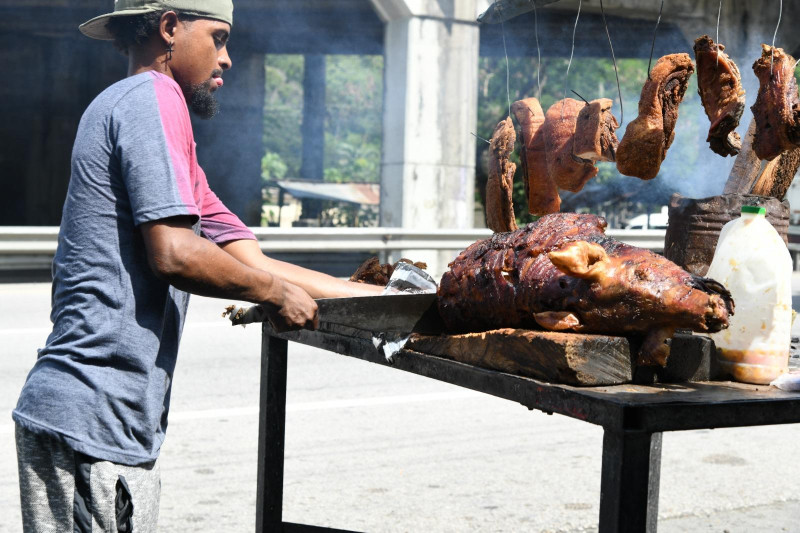The Juan Pablo Duarte Highway, stretching from Santo Domingo to San Fernando de Monte Cristi, serves as more than just a transportation route—it is a vibrant artery of commerce and culture. Spanning six provinces, the highway is lined with vendors and artisans who have turned its bustling edges into thriving marketplaces. These individuals, often rooted in family traditions, showcase the rich diversity of regional products and crafts that define the Dominican Republic. Alejandro, a 27-year-old vendor, has spent over 15 years perfecting his trade of selling chicharrón, a popular pork-based delicacy. ‘I started at nine, helping with plates, and now I handle everything from cutting pigs to serving customers,’ he shared. Similarly, Ariel, a seasoned crab seller, has been offering jaibas (blue crabs) for more than two decades. He attributes his success to his father, who introduced him to the business. ‘This is how I make my living,’ Ariel remarked, highlighting the generational continuity of his craft. Beyond food, the highway is also a hub for artisans like Criselyn Cabreja, whose passion for crafts led her to establish ‘Hermanos Cabreja,’ a business specializing in handmade items. ‘I’ve always loved creating things with my hands,’ she said, reflecting on her journey from childhood hobbyist to successful entrepreneur. Rufino Hidalgo, another artisan, has spent over 20 years in the woodcraft business, crafting kitchen utensils and cockfighting cages. ‘These pieces are made entirely by hand, and the demand is always high,’ he explained. Together, these vendors and artisans embody the resilience and creativity of the Dominican people, transforming the Juan Pablo Duarte Highway into a living testament to their heritage and livelihoods.
Roast pork, porcelain, or crabs: The stories found on the Duarte Highway
